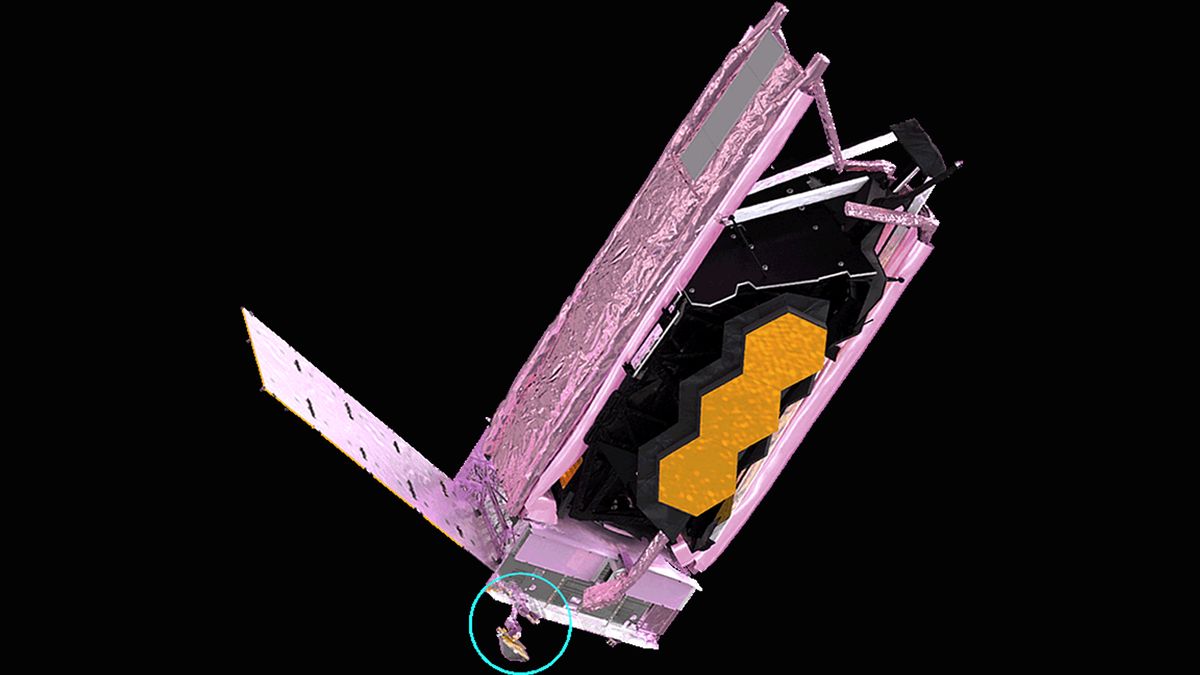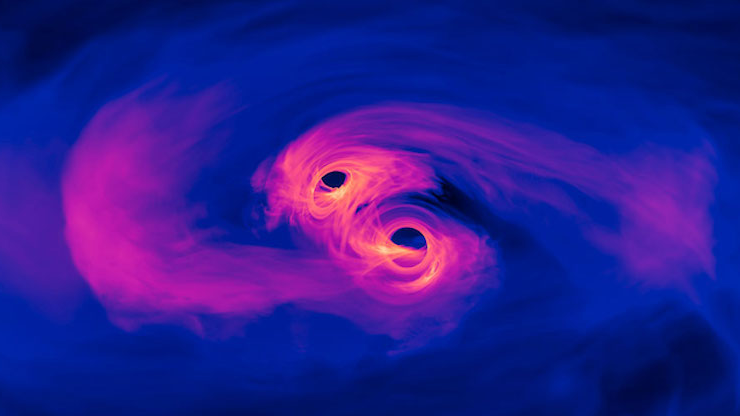
NASA’s new James Webb Space Telescope successfully deployed a critical antenna Sunday (Dec. 26) just one day after its Christmas launch into space.
The space telescope unfolded what scientists call a gimbaled antenna assembly that carries the high-rate data dish responsible for beaming Webb’s observations of the early universe back to Earth. Webb launched into space Saturday atop an Ariane 5 rocket that lifted off from a spaceport in Kourou, French Guiana.
“This antenna will be used to send at least 28.6 Gbytes of science data down from the observatory, twice a day,” NASA officials wrote in a mission update. “The team has now released and tested the motion of the antenna assembly — the entire process took about one hour.”
Related: How the James Webb Space Telescope works in pictures
Live updates: NASA’s James Webb Space Telescope mission
The $10 billion Webb space telescope is designed to study the earliest stars in the universe and other cosmic mysteries. It is the largest and most powerful telescope ever launched into space.
Saturday’s antenna deployment was the latest in a monthlong series of steps to prime the space telescope for its deep-space observing mission. Webb is currently on a 29-day journey to a stable point in space called Lagrange Point 2, or L2, which is nearly 1 million miles (1.6 million kilometers) from Earth. It is from there that the infrared space telescope will observe the universe.
In addition to the antenna deployment and testing, Webb flight controllers activated the telescope’s temperature and strain gauges for the first time, according to NASA’s update. Those gauges will allow flight controllers to monitor the Webb space telescope’s temperature and structural health in the days to come.
Related: 5 missions to look forward to after the James Webb Space Telescope
Related Stories
Having an accurate reading of Webb’s temperature and structural loads is key for mission scientists and engineers because one of the most harrowing periods for the space telescope is still ahead: deployment of its huge sunshield.
The James Webb Space Telescope is an infrared observatory designed to make the most detailed observations ever, but only if it can be kept cold enough. To do that, Webb will unfurl a huge multi-layered sunshield the size of a tennis court that will unfold in stages over the first eight days after launch. The first step in that deployment process is expected to begin Tuesday (Dec. 28), three days into the mission.
The next immediate step for the Webb space telescope will be a second mid-course correction burn, a maneuver designed to refine its course toward L2. That maneuver, the second of three planned burns, is expected to be completed later in the day on Monday.
Email Tariq Malik at tmalik@space.com or follow him @tariqjmalik. Follow us @Spacedotcom, Facebook and Instagram.



